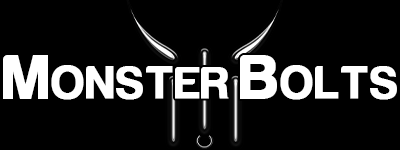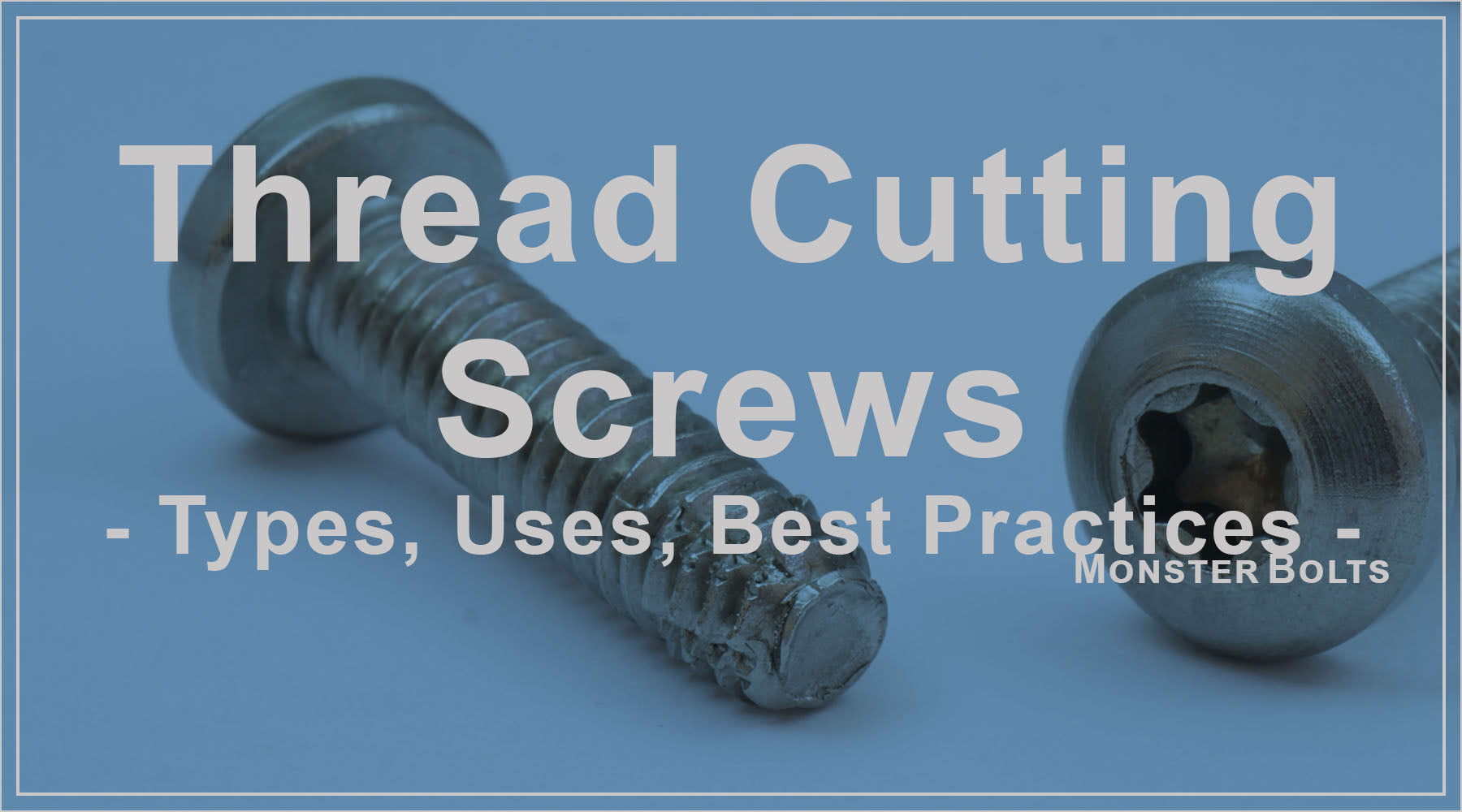Thread Cutting Screws Explained: Types, Uses & Best Practices
Quick Answer: Thread cutting screws tap their own threads in pre-drilled holes. Use Type 1 or Type 23 for fine threads and thinner material or precise fits; use Type F or Type 25 for coarse threads, thicker materials, and faster chip clearance. Always drill the correct pilot hole and maintain chip evacuation for clean, strong threads.
Monster Bolts stocks multiple thread cutting types, sizes, and finishes so you can match your material and application with confidence.
These specialized screws tap their own threads in pre-drilled holes, ideal for secure and robust fastening in metal, hardwoods, and some engineering plastics. Below we outline the four common types—Type 1, Type F, Type 23, and Type 25—so you can choose the right profile for your project.
Types of Thread Cutting Screws
🔩 Type 1 – Single Edge, Fine Threads (aka Type D)
- Threads: Fine machine screw thread
- Point: Blunt, tapered
- Cutting: Single straight cutting edge
- Best For: Thinner metals, precise fits, controlled thread engagement
Fine threads maximize engagement in thinner substrates; ensure accurate pilot drilling.
🔩 Type F – Multiple Edges, Coarse Threads
- Threads: Coarse machine screw thread
- Point: Blunt, tapered
- Cutting: Multiple straight cutting edges for efficient chip creation
- Best For: Thicker metals, harder materials, high-strength assemblies
Coarse threads are tolerant of tougher materials and speed installation.
🔩 Type 23 – Triangular Edge, Fine Threads (aka Type T)
- Threads: Fine machine screw thread
- Point: Blunt, tapered
- Cutting: Triangular geometry for improved chip breaking/clearing
- Best For: Precise threads in denser materials where chip control matters
Great when you need the precision of fine threads with better chip evacuation than Type 1.
🔩 Type 25 – Aggressive Chip Clearing, Coarse Threads (aka Type BT)
- Threads: Coarse machine screw thread
- Point: Blunt, tapered
- Cutting: Larger triangular cutting feature for rapid chip removal
- Best For: Heavy-duty fastening in thicker materials; fast, robust thread formation
Choose Type 25 when speed and chip clearance are priorities in thick sections.
Type Comparison (At a Glance)
| Type | Thread Pitch | Cutting Geometry | Best Materials / Use | Key Benefit |
|---|---|---|---|---|
| Type 1 | Fine | Single straight edge | Thin metals, precise assemblies | Accurate threads in thin stock |
| Type F | Coarse | Multiple straight edges | Thicker metals, harder materials | Robust cutting, faster installation |
| Type 23 | Fine | Triangular for chip breaking | Dense materials needing clean fine threads | Cleaner chips, precise fit |
| Type 25 | Coarse | Large triangular edge | Thick sections, heavy-duty fastening | Aggressive chip clearance |
Pilot hole size, lubricant choice, and speed control all influence thread quality and holding strength.
Best Practices for Thread Cutting Screws
- Drill the Correct Pilot: Use the pilot size recommended for the screw size/type and material. Undersized pilots can crack material; oversized pilots reduce holding power.
- Control RPM & Pressure: Moderate speed with steady axial pressure helps the cutting edges form clean threads.
- Chip Evacuation: Back the screw out briefly to clear chips on deep holes or dense materials—especially for Types 23 and 25.
- Tooling: Use quality drivers/bits with proper fit to avoid cam-out; consider cutting oil on metals where appropriate.
- Material Match: Fine threads for thin/precision work; coarse threads for thicker, tougher materials. Avoid soft, gummy plastics—use thread forming or dedicated plastic screws instead.
Find Your Thread Cutting Screws at Monster Bolts
We stock a wide selection of thread cutting screws across sizes and finishes. Browse here:
Need drivers or hex keys? See our Hex Keys & Bits.
Frequently Asked Questions (FAQs)
Can I use thread cutting screws in plastic?
It depends on the plastic, but thread forming screws (or dedicated plastic screws) are often better. Thread cutting types excel in metals and hardwoods.
How important is the pilot hole size?
Critical. An incorrect pilot can strip or undercut threads. Follow recommended pilot sizes for the screw type/size and material.
What’s the difference between thread cutting and thread forming screws?
Thread cutting screws remove material to create threads. Thread forming screws displace material to form threads. Cutting is typically used for harder materials; forming is common in softer metals and plastics.
Type F vs. Type 25 — which do I choose?
Both are coarse-thread cutting screws. Choose Type F for robust cutting in thick/harder materials; choose Type 25 when you want faster chip clearing and aggressive cutting in thicker sections.
Can thread cutting screws be reused?
Sometimes—if the threads in the base material remain intact and the screw isn’t damaged. For critical joints, use new screws to ensure performance.
Need help choosing? Call (850) 764-2658 or email support@MonsterBolts.com — we’re happy to help.

